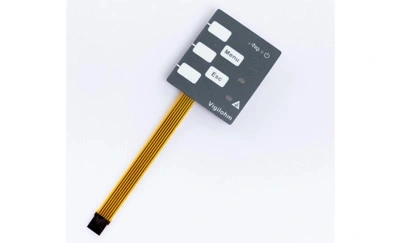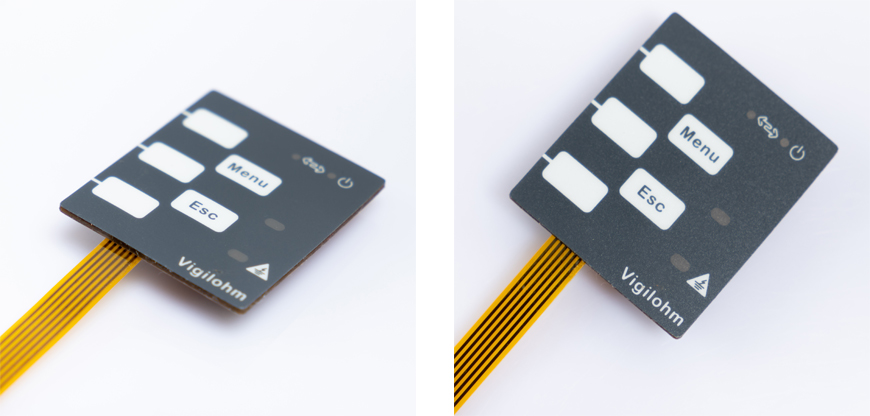
In the ever-evolving landscape of technology, the capacitive touch membrane switch has emerged as a crucial interface in various electronic devices. From smartphones and tablets to kitchen appliances and industrial control panels, these touch-sensitive marvels have become an integral part of our daily lives. But have you ever wondered how they work their magic? In this article, we will delve into the inner workings of capacitive touch membrane switches, demystifying the technology behind them.
A capacitive touch membrane switch is a user interface that relies on capacitance to detect touch or proximity. It comprises multiple layers, including a top layer made of a flexible material like polyester or glass, a conductive layer, and a circuit layer. The magic happens when these layers interact.
At its core, capacitance refers to the ability of a system to store an electrical charge. In the context of a capacitive membrane switch, the top layer, often referred to as the "touchscreen," stores an electrical charge. This charge is distributed uniformly across the layer.

The Touch Interaction
When you touch the surface of a capacitive touch membrane switch, your finger or a conductive object disrupts the uniform distribution of the electrical charge on the top layer. This disturbance is detected by the conductive layer underneath, triggering a change in capacitance.
Sensing the Change
The conductive layer is equipped with sensors, typically in the form of a grid or pattern. These sensors are constantly measuring the capacitance at different points on the touchscreen. When you touch the screen, the sensors identify the specific points where the capacitance has changed.
Processing the Data
The data collected by the sensors is then processed by the circuit layer. Advanced algorithms and controllers analyze the information to determine the exact location and nature of the touch input. This process happens in a fraction of a second, allowing for real-time interaction.
Enhanced Sensitivity
One of the key advantages of capacitive touch membrane switches is their high sensitivity. They can detect even the slightest touch, making them incredibly responsive and user-friendly.
Durability
Capacitive touch membrane switches are known for their durability. The absence of physical buttons reduces wear and tear, ensuring a longer lifespan for devices.
Multi-Touch Support
Many modern capacitive touchscreens support multi-touch gestures, enabling users to perform various actions simultaneously, such as pinch-to-zoom or rotating images.
No Pressure Required
Unlike resistive touchscreens that require physical pressure to register a touch, capacitive touch membrane switches respond to the electrical properties of your finger, making them effortless to use.
Consumer Electronics
Capacitive touch membrane switches are widely used in smartphones, tablets, and smartwatches, providing users with an intuitive and seamless interaction experience.
Industrial Control Panels
In industrial settings, these touch keypad membrane switches are used in control panels, allowing operators to monitor and control complex machinery with ease.
Medical Devices
Medical equipment often utilizes capacitive touchscreens for their hygienic and easy-to-clean properties, ensuring a safe and efficient healthcare environment.
In conclusion, capacitive touch membrane switches have revolutionized the way we interact with electronic devices. Their underlying capacitance principle, coupled with advanced sensor technology, allows for precise and responsive touch inputs. Whether you're scrolling through your smartphone or operating industrial machinery, capacitive touch membrane switches have undoubtedly made our lives more convenient and efficient. If needed, you could choose Niceone as your reliable touch keypad membrane manufacturer.
Are capacitive touch membrane switches the same as resistive touchscreens?
No, they are not. Capacitive touch membrane switches rely on electrical capacitance, while resistive touchscreens respond to physical pressure.
Can capacitive touchscreens work with gloves?
Some capacitive touchscreens are designed to work with gloves, especially those made of conductive materials. However, not all capacitive screens are glove-friendly.
Are there any drawbacks to using capacitive touch membrane switches?
While they offer many advantages, capacitive touch membrane switches may not work well in extreme weather conditions or with non-conductive objects.
Do capacitive touchscreens require calibration?
Most modern capacitive touchscreens do not require manual calibration. They are pre-calibrated during capacitive keypad manufacturing for optimal performance.
Can I use a stylus with a capacitive touch membrane switch?
Yes, you can use a stylus designed for capacitive touchscreens. These styluses mimic the electrical properties of your finger, allowing for precise input.